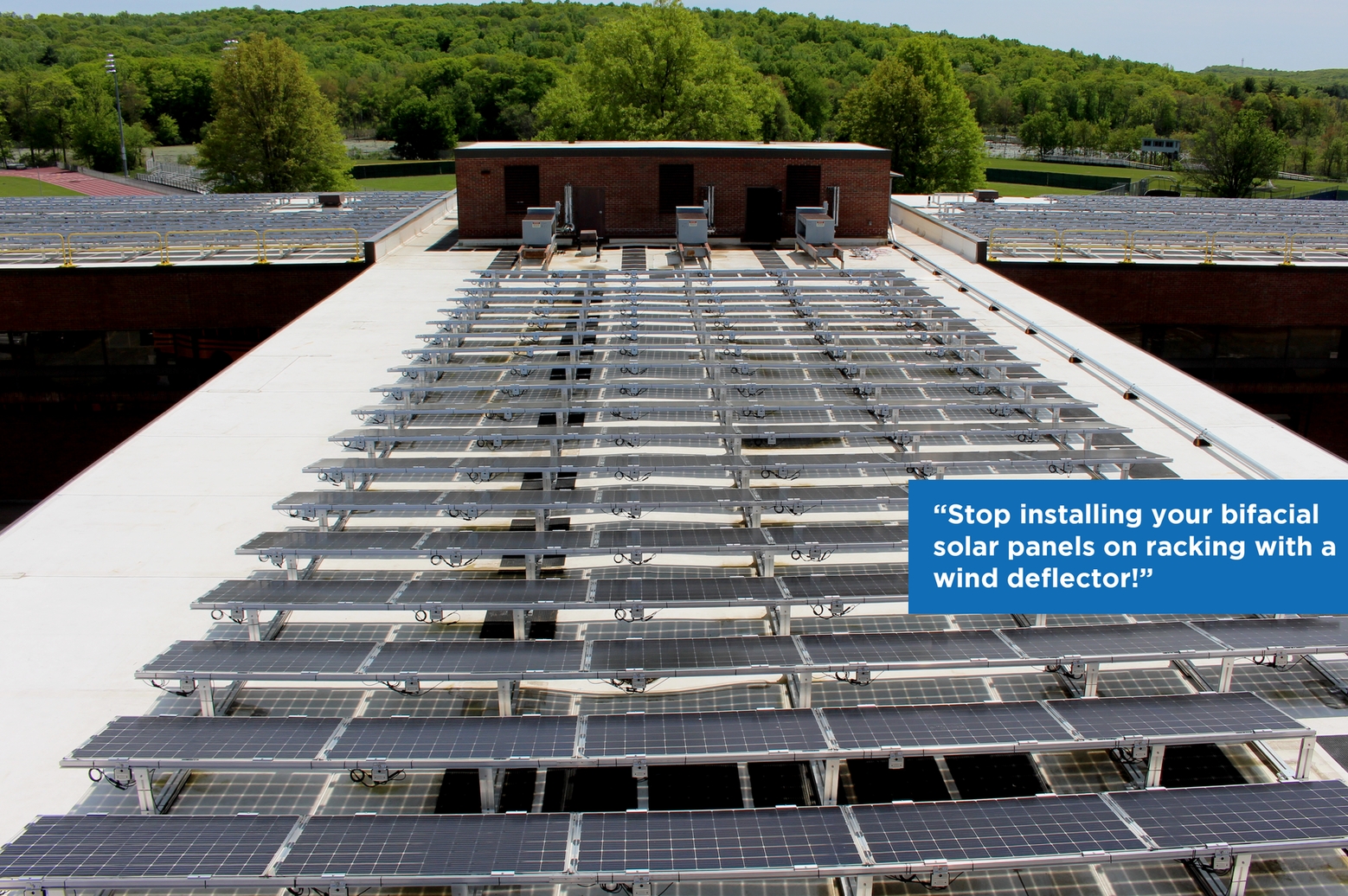Unlock the True Power of Solar
When the first Single Axis Trackers (SATs) came in operation around the world, over four decades ago, they did not immediately get adopted by the Solar Industry. In large part because there was no Solar Industry in the eighties, but also because of unknowns such as aging, reliability, and maintenance costs. Even if the extra yield was appealing (along with the even more alluring increased Return On Investment [ROI]), the increased risks kept system owners and investors away from this technology for several decades, until all the elements of the puzzle came together: price, reliability, availability, contracts, insurers, installers, etc.
The same is happening with bifacial solar panels.
Bifacial solar panels, a new technology in the eighties, is mainstream today for ground-mounted solar, but strangely absent from rooftop system. Why?
Just like SATs, rooftop bifacial systems promise increase yield and return on investment, but just like any new technology, paradigms must be shifted around to unlock its value.
On bifacial solar panels spec sheets, an ominous “10%” extra bifacial energy is often stated, along with an even more gloomy “20%” or “30%”, all this without any explanation on how to achieve this extra yield.
Now that bifacial solar panels are sold at approximately the same price as equivalent quality monofacial solar panels, an astute solar developer, system owner or investor shall ask “how can I achieve this 10-20% extra yield”.
“Stop installing your bifacial solar panels on racking with a wind deflector!”, shall answer the bifacial solar panels specialist.
Bifacial solar panels require space under them for light to bounce and reach the backside of the solar modules. Panels must be installed in the landscape orientation, elevated at least 10” from the roof at the front, tilted as much as possible (10° and up), and no wind deflector or rails must be installed underneath. Open racks without wind deflectors will also cool the panels better, usually increasing yield by an additional 2%. Anchored systems are often preferred to ballasted systems, as they block less light from reaching under the panels.
Another mistake perhaps is that developers, system owners and investors often imagine their projects and write their contracts for Watt peak capacity (power), instead of electricity generation (kWh), and thus incentivizes EPCs to use a low-cost racking with a wind deflector that will reduce the project cost in $/W, but at the same time prevent a 10-20% increased annual production possible with bifacial panels, thus impoverishing the system owner.
The Revolution of Rooftop Bifacial
Savvy solar developers, including some roofers, now target clients needing a new roof, and package the roof as part of the “energy generating asset”, claiming the Investment Tax Credits (ITC) and accelerated depreciation on a portion of the roof value. Then, leveraging the reflectivity of white EPDM or TPO roofs (up to 80%!), they benefit from bifacial solar panels at almost no cost premium to produce an easy extra 10% yield with bifacial solar panels still tilted at the standard 10 degrees.
To allow such financial structure, these system developers, owners and investors now request bifacial panels to be installed on a bifacial-optimized solar racking.
History repeats itself
As bifacial panels become more accessible, system owners and investors looking to bank on bifacial solar panels' extra yield will prefer rail-based racking that protects solar panels from degradation, and that don't use wind deflectors.
Interested in unlocking the full potential of bifacial panels, as stated on their spec sheet? Contact us to learn how to optimize your flat rooftop bifacial solar system and obtain better yields. Now that all the pieces of the bifacial solar puzzle have come together, the time is ripe to step into the bifacial rooftop revolution, and reap the rewards.
Just the same way early adopters of SATs harvested increased revenue.
Opsun - Unlock the True Power of Solar
See the whole article here, page 39.
